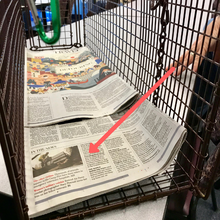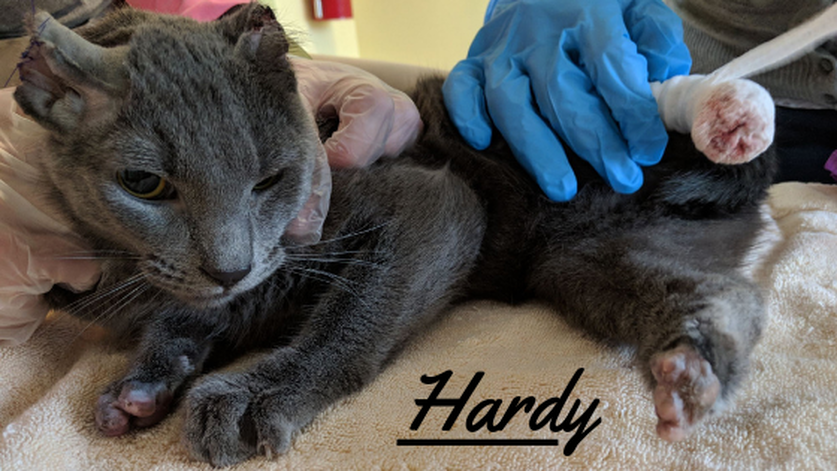|
A bill to increase penalties on animal abusers in Virginia has passed out of committee and could be headed for state house and senate floor votes soon. The bill, SB 1604, would make “cruelly and unnecessarily beating, maiming, mutilating, or killing a dog or cat,” a Class 6 felony. The bill was introduced by Virginia State Sen. Bill R. DeSteph, Jr. (R) of Virginia Beach.
The penalty for such actions now is only a misdemeanor and as written, current regulations require that an animal die from the abuse or torture in order for the offender to be charged with a felony. The animal must also be a companion cat or dog, leaving other animals, like community cats, unprotected. We’re excited to see this change proposed and support passage of the law. Abuse or torture of animals is an extremely serious offence, and it shouldn’t take an animal victim paying the ultimate price in order for human abusers to be held sufficiently accountable. Take for example Hardy, the cat we helped recover from terrible abuse in early 2018. He’d had his ears, tail, and all four paws mutilated. He was in dire condition when he was found outside and required immediate and costly veterinary intervention to be saved. Under the current regulation, our successful efforts to save Hardy could actually lessen the abuser’s offence in the eyes of the law. Striking animals, tethering them outside in poor weather, neglecting their care, or dumping them when they’re no longer wanted are all forms of animal abuse. Unfortunately, the laws in our country are somewhat of a patchwork and can vary greatly from state-to-state and between jurisdictions. To see the animal cruelty laws on the books in your state, check out the Animal Legal Defense Fund’s database. There you’ll find a summary and specifics of your state’s laws and how it ranks in comparison to others. To learn more about animal cruelty, its forms, and why it happens, visit our site here.
2 Comments
 Demo trap lined with story about... trapping animals! Demo trap lined with story about... trapping animals! No matter the season, summer, spring, winter, fall or kitten, we’re out making an impact for cats and working to grow the trap-neuter-return (TNR) community. This past weekend we presented our workshop, Caring for Community Cats, to a wonderful group of folks who were looking for ways to help free-roaming cats. We began by explaining who free-roaming cats are, where they are, and why they live outside. We covered local regulations too, and then went through the step-by-step of TNR, from assessing the situation at the start of a project, to returning cats and ongoing colony management. Our trained staff also demonstrated how to set up and set humane traps and shared practical tips from our own experience. These workshops also serve as a way for community members to connect with our programs and with each other. We’re always uplifted by the positivity that arises when caretakers and advocates for cats get together. More cats benefit when we all come together to work cooperatively; when welfare organizations like ACR provide knowledge and resources, when individuals do their part, and when local governments lend support, the greatest impact can be made. Thank you to the Mount Rainier Police Department for hosting and providing the event space, and thank you to all who joined us to learn about TNR and caring for community cats. Don't forget to follow our Facebook page to stay up to date on our current work and to find out about upcoming workshops. Are you a community group looking to get involved with TNR or a shelter looking to learn more and start a program? Please get in touch! Send us a message at acr@saveacat.org or call 301-277-5595. We'd love to hear from you and find out how we can work together for cats. |
Details
AuthorAlley Cat Rescue is leading in the way in promoting humane and compassionate care for ALL cats. Archives
January 2024
Categories
All
|


 RSS Feed
RSS Feed